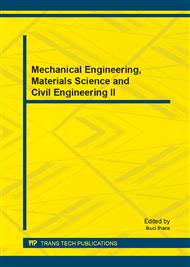p.781
p.785
p.790
p.797
p.802
p.807
p.814
p.818
p.823
Cheap Mix Design of the Rock-Filled Concrete Materials
Abstract:
Rock-filled concrete (RFC) is an innovative dam construction material that has been developed quickly in China since 2003. The concrete is produced by pouring the Self-compacting concrete (SCC) into the voids of large rock chunks, with a minimum size of 300 mm, in a formwork. To date, all the practical applications have shown that using RFC in dam constructions has significant economic and environmental benefits. Total construction cost is reduced due to using large amount of rock chunks, which can amount to roughly 55% of the total volume of RFC. When producing SCC, we make full use of local raw materials (e.g. fly ash, limestone) and optimize mix design based on the simple mini-slump flow tests on pastes to obtain better workability and lower cost. SCC with excellent workability can be obtained even the powder material is limestone powder alone. It is indicated that RFC is a potential and promising material for use in future concrete dams.
Info:
Periodical:
Pages:
802-806
Citation:
Online since:
December 2013
Authors:
Price:
Сopyright:
© 2014 Trans Tech Publications Ltd. All Rights Reserved
Share:
Citation:


